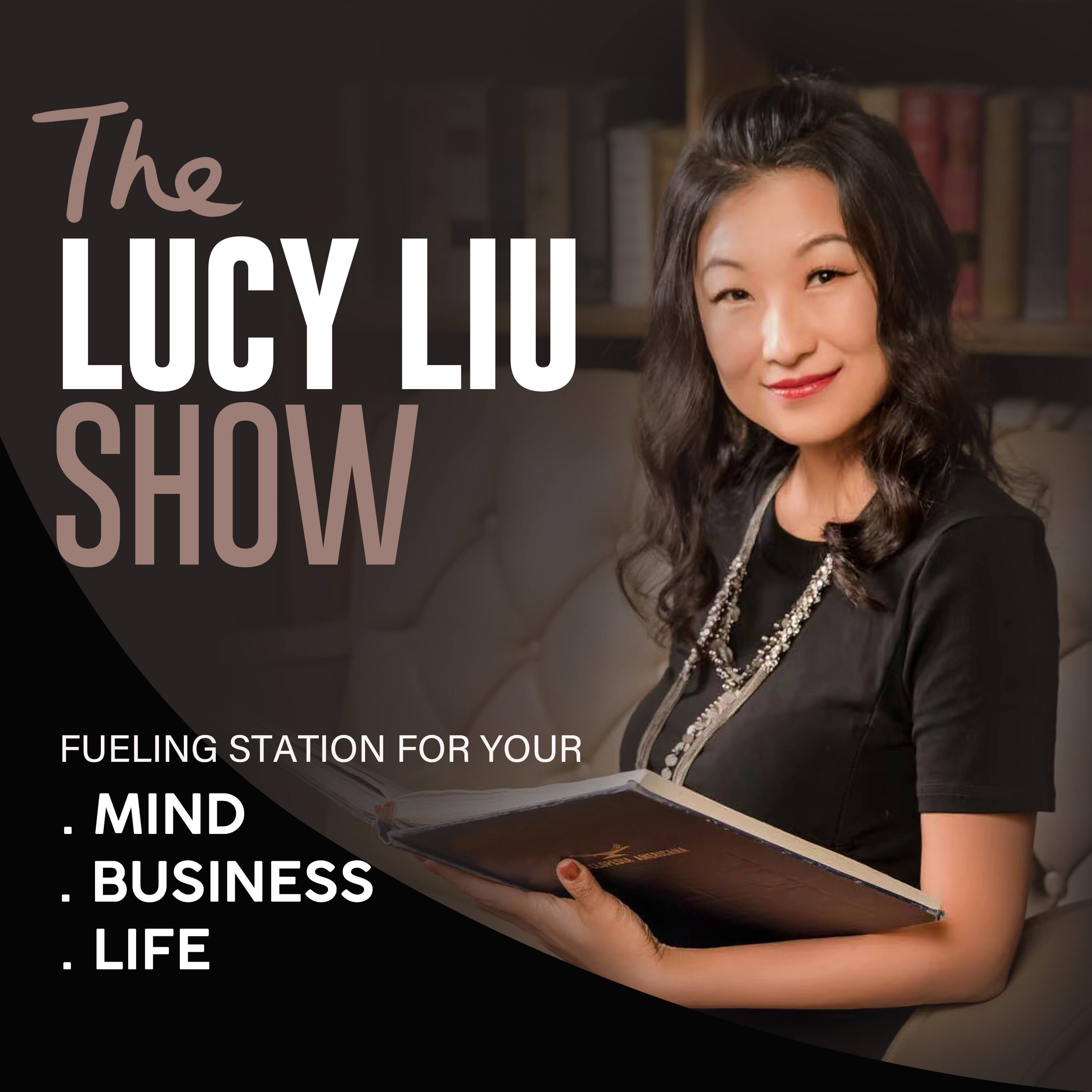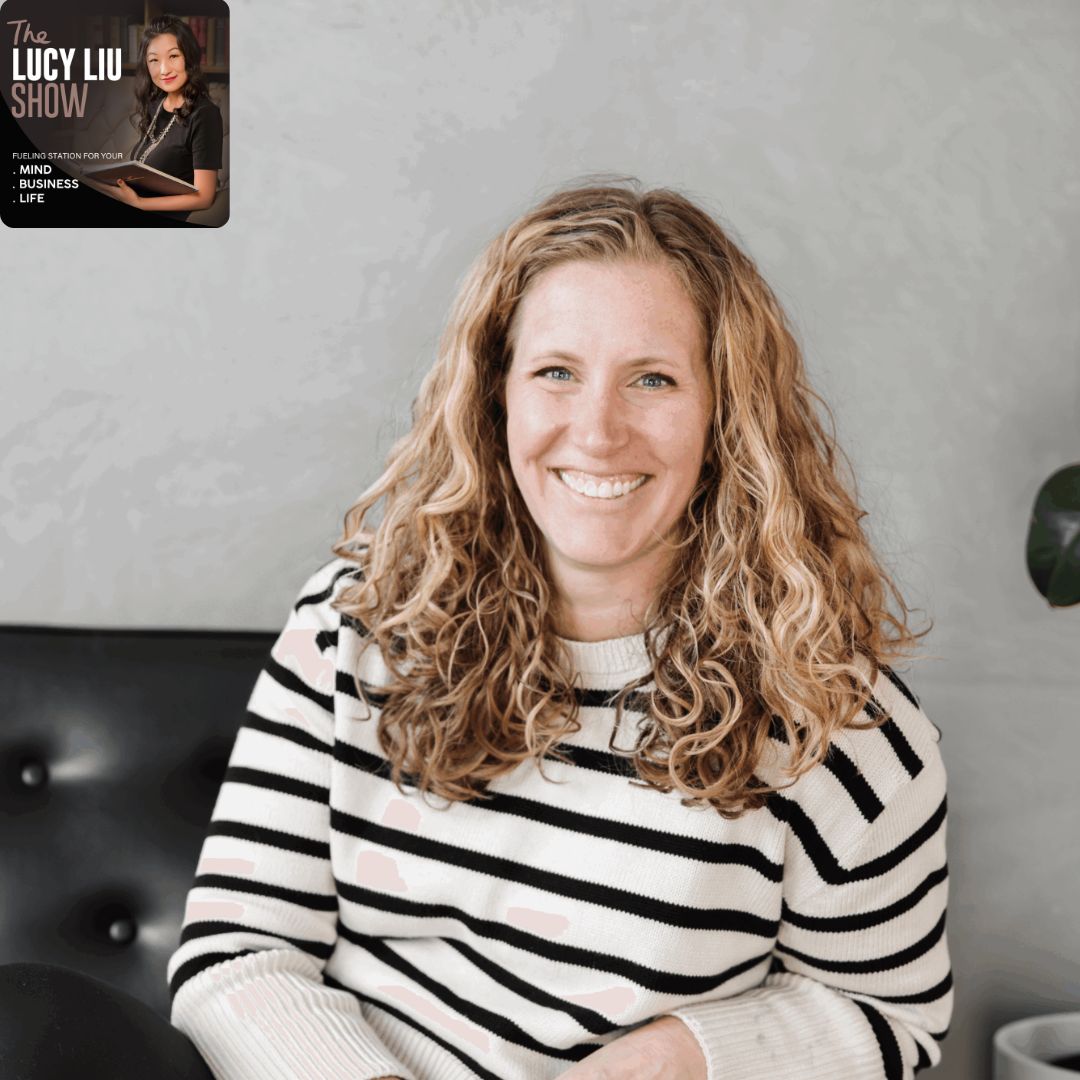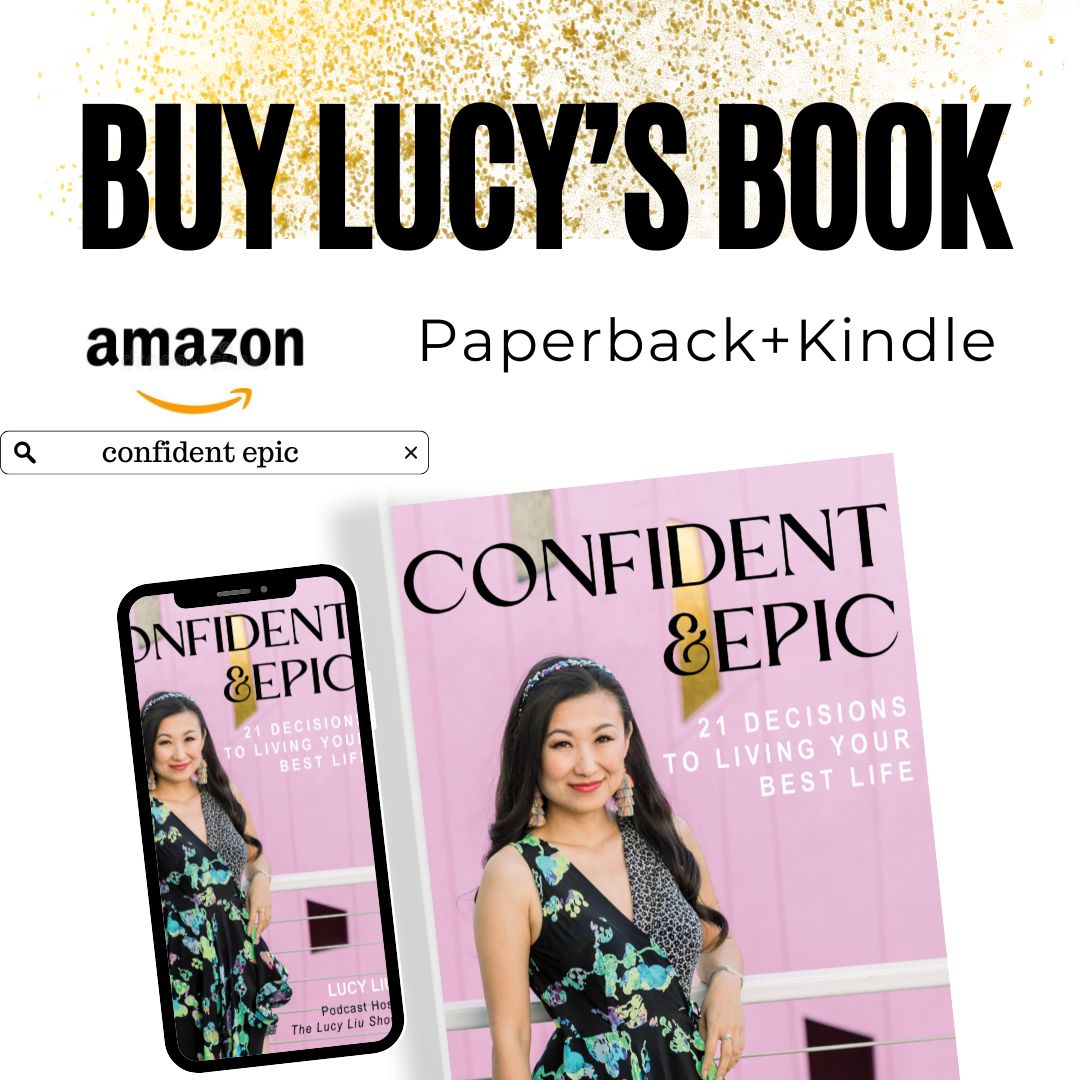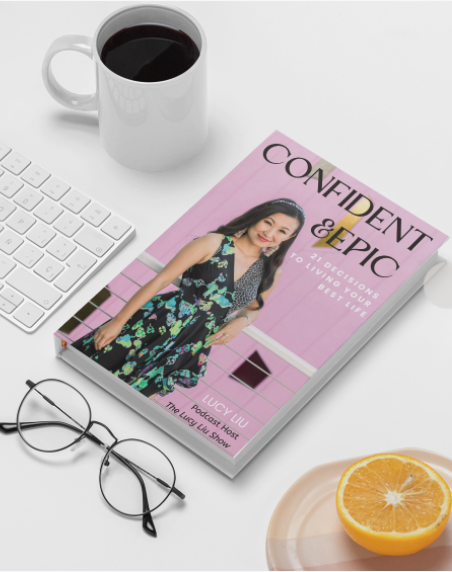This episode is for you if you want the confidence to make more money with your email list, even if that email list is small, no matter what industry you’re in. You’re in for a treat, my friends, because I love my guest today, my friend and fellow Angeleno, Miss Shannon Bondi, aka the email queen, who helps business owners make money using email. Doesn’t that sound amazing? Welcome.
Hi, Lucy. Thanks for having me.
So good to see your face on zoom. Again, we’ve chatted many times before. And it always brings me a smile to talk to you.
Oh, that’s so nice. I know. I always love to get to see you and chat with you as well.
Awesome. Okay, so let’s get straight to it. What are some of the biggest mistakes you’ve seen people make with their email list that’s costing them money?
Oh my gosh, so many. And any of them I’m telling you today are probably ones I have made myself. So don’t feel badly that if you are making some of these, but things I see is not emailing.
That’s the biggest one I probably see is that people get in their heads about it and just don’t do it. And then often I see one of the biggest ones I feel like I see is that often people just become kind of a robot when they get in front of their emails, right? So they’re like, you’re like so funny and personable online or on like social platforms.
And then you get into your emails and you’re like, hello, I am a person that would like to send you an offer. And like, I’m like, who’s this? Like, why?
Why am I not getting this fun personality in here? And honestly, this was a mistake I made for a long time in my emails, too. So I think what we to remedy that we should just act like we’re talking to one person, right?
Like, how would you answer a question to just talk to one person? How would you say something like if you’re telling a story? How would you say that to like your best friend, right?
And those things, when we bring that into email, you make it so much more personal and so much more fun and interesting and more you to your audience.
I love that. Okay, so what’s the number one mindset shift someone needs to adopt in order to start email as a profit generating tool?
Oh, yeah, that’s a good one. So again, I think we get hung up on this idea of like needing to be really professional and all these things in email where I would argue the more fun you have, the more fun your subscribers will have too. So I think we tend to, we just need to reframe a little bit when it comes to this, right?
Like our emails don’t always have to be selling like the way we think like, yes, we want to make money from them, but we don’t always have to be like pushing business, pushing sales, all of these things, sometimes just showing up and then inviting people to go deeper with you. So like if you show up, you tell a story about like a client win or even something like you noticed, I’m, I always do this, like I’m out and I see something and I’m like, Oh, that’s a great email. Right?
Like, I’m like, Oh, I should make that email. And so I’ll like tell a story around it. And then I’ll be like, if you’re struggling with storytelling, XYZ, whatever it is you teach, right.
Or help people do, if you’re struggling with that, let’s go deeper. Come join me inside this offer, right? Like, or join me inside or email back and let me know what your biggest problem is or things like that.
So you’re not constantly feeling like you’re quote unquote being salesy. You’re really sharing more of an experience and how you can go deeper with them.
I love that. It’s like having a more awareness of where you’re going. Just like when I first started writing my book, I took a course on book writing and it was all about that.
It was about that awareness. Think of a story. What did you learn from that?
And that becomes one chapter of your book. And the same with email, you can be just going on about your day and something you see or hear or learned, right? That could be an email idea.
So be more aware, consciously searching for topics. And I think the more you are aware of it, the more you actually see it coming everywhere.
Exactly. Yeah, we have a saying in my membership that everything’s an email. It’s literally everywhere. Anything you do can be an email.
Yeah, I like that. I know what really helped me when I first started with zero subscribers was that my business coach telling me that she was making six figures with 400 people on her list. So I think it’s not about the size of your list because I’ve also talked to people who had like 10,000 people on their list and they weren’t selling anything and they weren’t making anything.
So how do you go about increasing your sales and revenue per subscriber, would you say without feeling salesy?
Yeah, I think this is something people get tripped up on a lot, mainly because I know you and I Lucy have been in this industry for quite some time. So we’ve seen quite a lot of things. So a lot of people who do teach email and that are like what I like to call the celebrity quote unquote celebrity entrepreneurs that teach email kind of have this old school way of thinking.
And I’m not knocking anyone so much as they just are sharing experiences that were like from 10 years ago and anymore, it’s not the case, right? So for instance, they’ll say, Oh, you’ll only sell to 2% of your list. So you have to grow your list to a certain amount if you want to make a certain amount of money.
Whereas yes, this, this statistically mathematically is probably true. However, I’ve proven this wrong hundreds of times because my philosophy is you want to attract your ideal client to your email list, not just trying to get out there to hit a number. So like, you don’t want to like trying to attract everyone and their brother to your email list so that you can like try and sell a certain amount.
Right? Whereas if you’re focusing on just attracting hyper-specific people that are like your people, you’re going to have much more success with a small list because it’s full of ideal clients that want your offer, are interested in your offer and just want to get to know you more and want to understand your offer more. And if it’s right for them.
Beautifully said. I love that. Like I help women.
So I get excited, right? When the subscriber is a female name, that’s, that’s my, that’s my, my people, right? A man on my email list that would not be helpful for me.
Fair, fair. Yeah. No.
And I think, like I said, I think we get caught up in these vanity metrics, right? Of like, just, it just comes from being on social and all the things like that society, you know, deems valuable. And so we get caught up on that, but I’m like, if you have 10 ideal people who are on your email list, like that could be a goldmine if they’re the right people.
So it’s just, yeah. Again, I think we’ve just gotten this old school mentality of like, you need to have more to make more, but I find that that’s just not true anymore these days.
Yeah. Okay. So what happens when you think your email lists subscribers are cold?
They’re very cold. They’ve never purchased from you, but they just learn about you somehow. What’s your goal to strategy to turn those cold, uh, subscribers into hot buying leads or people who really want to work with you?
I love this question.
Cause I literally just taught a class on this this week. And so I’m very excited to talk about this. I just taught a warmup, like rewarming up your list.
If it’s, you know, you have some cold subscribers, but if, if somebody, so there’s two ways of kind of answer your question here. So the first way is if you’ve had a list for a while and you’re just not seeing sales and all of this kind of thing, you probably do need to do some sort of list cleanup, which would re-engage these cold subscribers, get find out if they’re even interested in your offers. And if not getting rid of them actually can boost your email list stats and getting your emails in front of people that actually want them.
Um, so it’s a good strategy to do, but if you’re like newer to email and you’re just getting new subscribers on, um, the way I would do that is I would make sure you have some sort of good welcome sequence or warmup sequence for them to go through so they can get to know you. And, you know, I have a lot of strategies of how to do this in the best way. I think a lot of things out there are helpful that teach, but I think that they kind of aren’t teaching the way that I teach it.
And so I think that there’s a certain way to go through a welcome sequence with your new subscriber that really can, um, warm them up and get them into a sale a lot faster, like collapse that timeline. But like I said, a lot of the things I see out there with, you know, Oh, get my, my free, like, you know, welcome sequence or, or here’s my cheap, whatever one. Right.
And I’m like, you really need to customize it to your client and to your ideal, like subscriber, because if you don’t, it’s just, it’s, it’s just going to fall flat.
Mm. Yeah. But that, that reminded me of when I first started with my business coach, my very first business coach, like I did not interact with her at all.
I was watching her, right? So just because you’re getting nothing, it doesn’t mean people aren’t reading your emails. They aren’t watching you.
They are. So what you do matters and don’t give up because people are waiting for your help or your product. And it’s not something that you are not doing right.
You are doing it right. And people are out there. They might not be reacting to them.
Exactly. Exactly. Yeah.
It’s like anything, right. That we put out there. I think I always say this too, because when you post something on social, you get instant gratification pretty quickly, right?
Like you post a story or, or a post or whatever, and people like it or comment and you’re like, okay, this is doing well. And I actually bring this back to school when we were kids and like, we had to turn in assignments and we get a grade and it’s like, did I do okay? And so I think we all are just looking for that A plus on our papers.
Um, so when you send an email so often we don’t hear anything, right? Like it’s crickets. And so we’re like, is anyone even liking this?
Is this even working? And so to your point, I agree, like really just keep emailing because that’s really going to solidify you. The other thing it does is it keeps you front of mind to people.
They see you showing up and you might be the only person in your industry showing up regularly. Even if they’re not responding, they’re seeing you do this and they’re like, well, if I see her all the time or see the same thing she’s saying all the time or talking about all the time, she’s probably onto something. And I should probably pay attention.
Love it. Love it. Okay.
Okay. So let’s talk about what you actually write in your emails. What’s your formula for writing a subject line that attracts attention or boost open rates?
Oh, I love that question.
So I tend to write my subject lines after I’ve done my email in general. Sometimes I have an idea before and I, you know, maybe I’ll like a tagline I’ll pop in my head. Um, plus if you’d asked me even a few years ago, if like subject lines were my jam, I would have been like laughed at you.
But like now I’m, I love them. Like what are my favorite things to write? But I tend to do it after I’ve written my email because I can pull something from my email that like is intriguing or bring something out of the story, um, or whatever it is I’m sharing.
So, um, what I like to think of is what I open this email and I’m, I’m a tough sell. Like I’m very hard to get to open an email. So I think like, would I open this email?
Would this intrigue me enough? And I think a lot of times, again, we get kind of like technical because of the emails we see, right? Like we’re on like old Navy’s email list or whoever’s emails that they’re sending all the time.
And they’re just like sale, blah, blah, blah. Right. And like, so we’re like, Oh, email’s gross or it’s weird or subject lines have to be kind of like this one way.
No, I literally sent an email the other day that said everybody poops. That was literally my subject line. Um, so like have fun with it.
Like think of like things that will stop people when they’re scrolling through their inbox and get them to open it. And we also want to be careful not to be click baity too, right? Like we don’t want to put something that isn’t in your email or that doesn’t give them any kind of satisfaction when they go into your email.
So really I just like to think of, like I said, would I open this email and how does it like intrigue delight, make somebody stop in their tracks? Like, how can I get somebody to just kind of go, wait, what I need to read this, I need to know more. What, what is this?
Um, so I know it’s not like the most structured formula of all time, but that’s kind of the, like things I ask myself when I’m creating a subject line.
Do you like using emojis in your subject lines?
Personally? Yes. Um, but what I recommend is I wouldn’t use more than like one or two, depending on what you’re doing.
And I wouldn’t recommend using it to replace a word in case someone doesn’t, like if you were saying, uh, like t-shirt sale or something, you wouldn’t want to just use the t-shirt like emoji sale because if the, like somebody’s email isn’t loading right, or they don’t have emoji, that emoji or something like that, then it will just look weird. So I don’t like to replace words with emojis, but I do love to use a good emoji every now and then in my subject. Actually I use one pretty often, but it’s always like accompanying the email, not replacing words.
Perfect. Okay. How about the copy?
How should we write it so that it actually moves people?
Okay. Yeah. Copy.
So it actually moves people. That’s a great question. Um, so I like, again, I really like to think like I’m talking to a friend that’s, that’s like my, my number one copy tip is like, how can you write this?
Like you’re speaking to a friend? Like you wouldn’t start a story with like the other day I was walking down the street with my dog and like, you would jump into the story of like, you’re not going to believe what I saw on the street the other day. Like when I was walking my dog, or you’re not gonna believe what happened to me when I was walking my dog.
Right. Or something like that. Like you’re going to kind of jump in or like, you’re not going to like, or maybe you even jump into the story of like my dog ate a peanut, you know, or whatever it is right on the street.
And a squirrel got mad at it. Like, you’d be like, what, what is happening? Like you’d want it.
You want to bring people in immediately. So, um, I even say like, I don’t even start my emails anymore with like, Hey name, because I see that in so many emails and I’m not saying it’s bad to do if that’s like what you want to do. But I just jump into things, right?
Like I’ll be like, um, did you know an elephant has three toes? I made that up. I don’t know if that’s true, but I, um, you know, do you know, an element elephant has three toes first name, instead of saying like, Hey name, because then I’m bringing them in a lot quicker because we only have a few seconds, right?
People are email or reading emails when they’re in line for coffee, or they’re like picking up their kids in the car pool lane or something like that. Right. They’re not sitting down at their computer typically and reading emails like they’re, they’re doing it on the go.
So I want, I, I think the rule is you only have like 13 seconds or something like that for email. I’m sure it’s probably less than that now. Um, so I try and jump right into my stories or whatever it is I’m getting into because people are just busy and they don’t have time for stuff.
Um, I always say too, if you have passed third grade, you can write an email, like literally you do not have to be a amazing writer. You don’t even have to honestly be a good writer. You just have to be able to have a very easy sentence structure that you can write for people.
And you did that in third grade, probably even second grade, honestly. So you can really just be simple and have short sentence structure, get people through your email. Don’t have huge, huge long paragraphs.
Um, because most people don’t just sit and read. Um, and there are exceptions to that rule. Like maybe if you’re an author, for instance, like, and you’re known for writing long, complicated things, or I had a client one time who was like, she wrote long, heartfelt emails, but her audience was like trained for that.
So they knew to sit and expect that every time they got an email, they were like, Oh, I’m going to have this like heartfelt message. So there are exceptions to things. But in general, my favorite thing about email is it can be short, simple and sweet.
Love it. Short and simple and sweet. What’s your take on the new trend, the AI trend, Shannon?
Okay. So I can always tell when the email is written by AI, but I will say it’s really helpful. I think it’s a great place to get you started.
So I think put in, you can train AI so easily now to kind of get your brand voice. You can put it in there and then make sure you just edit it and look at it because there’s so many things that it like just doesn’t do well yet. I’m sure it’s going to continue to get better, um, over time.
But I always just like, if I use it to start something, it’s great for ideation too. So if you’re just stuck on what to say, that’s a great thing you could put in there of just like, Hey, what are some things my ideal client’s struggling with right now? And like, it could give you a list of things and spark an idea.
You could have it, like I said, get you started, but I would go in and make sure you’re looking through it and editing it. Because like I said, I have, I, in my membership, I have people submit emails in there. I can’t even tell you how many times I get it.
And I’m like, so chat to BT wrote this. Uh, I want to hear what you have to say, not what the computer has to say. Um, so I think it’s really important that like, I think it can be a great tool, but I think we need to moderate it as well.
Beautifully said. Okay. So you’ve been doing this for a long time.
What is something that, what is a myth you want to debunk for people around email?
Ah, I mean, okay. One, I for sure that kind of just grinds my gears is when people tell me email doesn’t work. Like I hear that one.
Luckily, I don’t think most of your listeners, if they’re listening to this episode are thinking that, but I do hear that one quite often, um, of just like, Oh, email doesn’t work anymore, blah, blah, blah. And I’m like, you wouldn’t even believe the amount of money people make from email. Like it is bananas, how much money people use or they make from email.
Um, so it’s that, um, would be a big myth. I would just love to, I wish I could touch people and be like, honestly, I wish I could go back to business, baby business owner, me and be like, girl, learn email because it will change your life. It literally did once I finally learned it.
So that would probably be part of it too, is like, if you want, don’t believe email works, let’s change that. But then also like, just learn how to use email in your business and use email in a productive way that works for you and your business. And you’re going to just see incredible results.
Would you recommend including a call to action, a CTA in every email?
I would recommend including a CTA in every email. There are a time and place that you don’t necessarily have to, but I would say in general, yes, I would have one, but it could be as simple as reply to this email. It could be as simple as here’s a post I put up on social that you should check out or, um, like a podcast episode or YouTube, something you listen to and you liked, like, it doesn’t even have to be something of your own content.
It could be this podcast episode. If you really enjoyed it, you could send an email about it or put it in a PS in your email or just say, Hey, if you’re looking for a good episode or, you know, my favorite episode I’ve heard this week or something like that, you could totally share those kinds of things too. So it doesn’t have to be like always a sale.
It doesn’t always have to lead to, um, something that like is business related. If that doesn’t feel aligned for you.
I think when I first started, I was afraid of unsubscribers. It made me really sad when someone unsubscribed, but not anymore now, because I know I provide value whenever I send an email, but how would you go around the fear of being unsubscribed?
I love that question. This would have been a good myth for me too. So I agree with this one because I feel the same way.
Like I still get a little bit sad every now and then when I see somebody leave, but there’s several things we want to keep in mind. One it’s almost never personal, right? Like almost never are people leaving email lists because they’re like mad at you or upset with you or anything like that.
They’re probably leaving because their inbox is out of control. Um, they’re not interested in what you have to offer. So it’s actually a favor to you to be like, Hey, I’m not going to open or buy from your emails.
So I’m just going to get off your list. Um, or they’re just, you know, live in life. Um, I have a friend who’s an email marketer and we were talking about it one day and she said she had somebody get like, come back to her list.
I guess that’s another great thing is people can always come back to if they change their mind. She said she didn’t even know the person had unsubscribed and she came back and she wrote her and she said, Hey, this is the craziest story, but she goes, I was, um, diagnosed with cancer and I had to go and I just unsubscribed from everything. I needed everything out of my life.
And she goes, and your emails were ones I actually missed. So I got back on your, now I’m in remission. I’m fine.
I’m feeling good. And I’m back on your email list. And my friend and I were like, we will never judge anyone for leaving our email list ever again, because it was such a compelling story, right?
Of just the reasons she had to put up her own boundaries. And so maybe that’s all people are doing, right? Like they’re probably, again, it’s, it’s likely not personal.
It’s likely that they’re just living their lives like all of us.
That is so good. I love that story. And it is true.
I mean, I myself, I clean my email once, once a year, at least to unsubscribe. And yeah, there are ones that I do miss and come back to but other ones I try to keep my inbox as clean as possible, right?
Yeah, exactly. It’s so easy to get out. I’m like a serial email list signer upper, you know, somebody who’s got a freebie.
I’m like, I’m in. And then my inbox is like, you’re at 98%. Babe, and I’m like, Okay, we got to cut back.
Beautifully said. Okay, awesome. In your days working in and out of your business, when you need a little picker upper, is there a quote that you resort to?
Oh, that’s a good question. I think one of my favorite quotes is probably not all that wander are lost. I love that one of just because I’m I love to go on adventures and things like that.
And and I think it can really relate to us in business too. Because often, when we’re out here doing things, we’re sometimes feeling a little lost, right? Because we’re, we’re all just we’re in marketing, or at least, you know, I am.
And so and marketing’s constantly changing, things are constantly evolving, people are learning different things, and they buy differently. And so sometimes we feel like we’re a little lost when it comes to, you know, anything in business. And so I always kind of think sometimes we’re not, we’re not necessarily lost.
We’re just we’re just wandering. And we’re finding our way through our own adventure.
I love that so much. Yes, to adventure in life. Yes, to having more fun.
And yes, to writing more emails with confidence, right? Yes, yes, yes.
Remember, at the end of the day, it’s just an email.
Awesome. Okay, so if you’ve enjoyed this episode, go follow Shannon at Mrs. Vondy. I love her Instagram.
I am addicted to waiting for her dog walk stories.
That’s so sweet. Thank you.
Thank you for being with us. Thank you.




 Lucy Liu is a master life coach helping women uplevel in business and life to confidently live an epic life! She is an unshakable optimist, wife, mom, entrepreneur, workshop facilitator, motivational speaker, best selling author and podcast host of The Lucy Liu Show.
Entrepreneurs & high achievers hire her to see clarity and take quantum leaps FAST. Because most of them are overthinking, scattered and self-doubting. She's best at helping you get unstuck, make faster decisions and fulfill higher potential. Bottom line: not only make more money and impact, but have more fun and live an EPIC life by design.
She has been featured in Medium, VoyageLA, Elephant Journal, ThriveGlobal, South China Morning Post and dozens of other media outlets.
Lucy Liu is a master life coach helping women uplevel in business and life to confidently live an epic life! She is an unshakable optimist, wife, mom, entrepreneur, workshop facilitator, motivational speaker, best selling author and podcast host of The Lucy Liu Show.
Entrepreneurs & high achievers hire her to see clarity and take quantum leaps FAST. Because most of them are overthinking, scattered and self-doubting. She's best at helping you get unstuck, make faster decisions and fulfill higher potential. Bottom line: not only make more money and impact, but have more fun and live an EPIC life by design.
She has been featured in Medium, VoyageLA, Elephant Journal, ThriveGlobal, South China Morning Post and dozens of other media outlets. 


